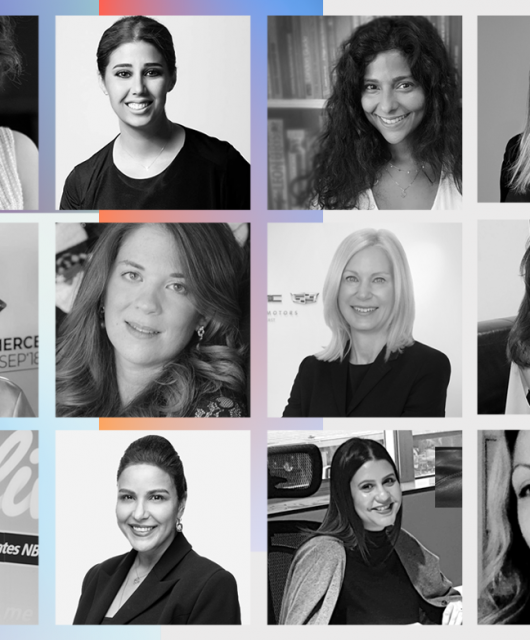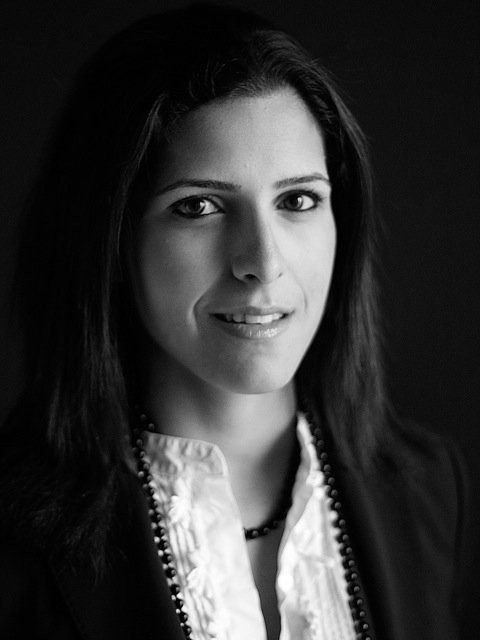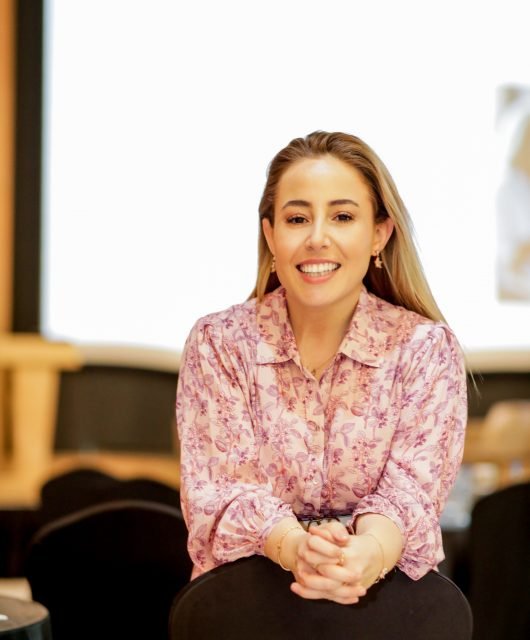2020 is over! Congratulations, you made it to 2021! It has been an exceptionally tough year for humankind. Covid-19 and its aftermath has completely reshaped the ecosystem which brands work in, consumers engage with and agencies service.
Today we’re debuting a Brandberries original ‘Breaking Into 2021: Reflections And Resolutions’; a content series in which we gathered the insightful opinions and reflections of the industry movers and shakers on 2020 and what to expect in 2021 for all communications disciplines; Brand Strategy, Consumer Behavior, Creative Industry, Digital Transformation and Brand Communications.

Head of Strategy, MEA,
VIRTUE
VIRTUE
Beyond the tragic deaths, it is fair to say that what the pandemic has done is to bring societies to a boiling point. I believe people taking the streets in Peru, Chile, Lebanon, Thailand, Nigeria, Indonesia, Bulgaria, and all around the world, are evidence of that. People are tired and not willing to withstand any type of bullshit anymore, from anyone.
Even though the world of brands does not occupy the minds of our audiences as much as we think it does, people are not willing to deal with our crap anymore. In a study done by VICE’s Information Desk, which asked people to “write a letter” addressed to brands, the interviewees manifested that they demand for companies to recognize that they are not as inclusive as their advertising shows. They also exhorted brands to do more and say less and that they should recognize their role in culture, supporting the change and evolution happening in real life.
However, to think the challenges our industry is currently facing are due to COVID-19 is to be myopic. We’ve been ‘out of touch’ for a while now.
First and foremost, we became obsessed with having a purpose and achieving greater things than just moving the sales needle. However, for most brands, that purpose was defined as a means to profit and not the other way around. Paraphrasing an article by Mark Ritson, if your sole reason to have a brand purpose is to drive profit then, are you really a purposeful brand? I think it’s better not to have one at all rather than having one because it’s “trendy”.
Second, it seems that at one point we allowed some of the big media companies to dictate the effectiveness conversation and ended up forgetting the teachings of Les Binet. We’ve let the 5-second pre-rolls and the pointless social media posts to take up most of our marketing budgets. We’ve let the performance-centric tactics that promise immediate results to be front and center and forced the long-term brand building objectives to take a back seat. As a consequence, our brands have never been weaker. We need to get back to that 60/40 balance, urgently.
The pandemic itself won’t change anything in our world of marketing, but I believe that we ought to use this context as an excuse to make needed changes in the way we do what we do. I think it’s about time we bury the word consumer or target and start recognizing the true and complete humanity of the people we talk to. It’s about time we truly understand the role that brands play in culture and the impact they can have in evolving it. It’s about time we stop seeing the advertising game as one that tries to steal people’s attention and adopt a value-exchange mindset by making content that it’s worth people’s time.
As Howard Gossage, I too imagine a “better world where there will be less, and more stimulating, advertising.”
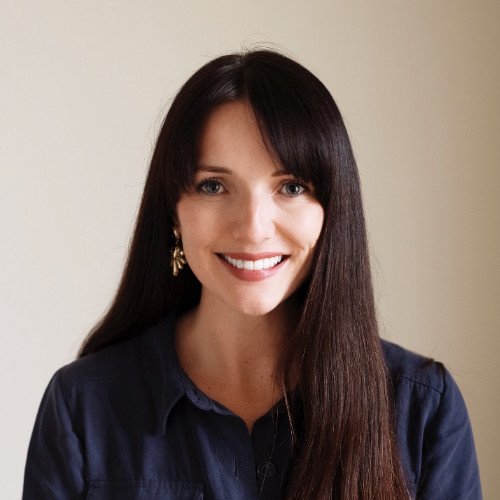
Strategy Director,
Saffron Brand Consultants
Charlotte Black, Strategy Director
During 2020, we have seen brands being held accountable for the impact they have in the world. Whether it was Oatly being called out for taking investment from Blackstone, an investment firm accused of contributing to deforestation in the Amazon, even though much of the Oatly brand is built on sustainability; Glossier retail employees coming out to highlight racial discrimination even though their brand stands for inclusion; or Nike, Adidas, L’Oreal and Spotify all being criticised for claiming to support racial diversity, while having all-white executive boards.
As we enter 2021 all brands will be expected to not just claim to have a belief or a mission to be more sustainable or more inclusive; they will be judged on how they truly act on the mission at every level of their business. This will include everything from how they develop their products to the experiences they deliver to customers and employees; radical transparency will be a table stake, which brands will win or lose on.
So, how can your brand be radically transparent?
Build– Ensure the products and services you build represent the world we live in. Brands will be expected to develop inclusive practices that deliver a better experience for all.
Invest– Do investors share and align to the values and beliefs of the organisation? It will be critical to dig into the full background of any investor and check that the company you keep lives up to the commitments your brand makes.
Partner– Potential partners need to be scrutinised as much as you scrutinise your own brand. Your partners are an extension of you and will therefore be held to the same standards. Can they deliver on your commitments as well as you do?
Employee experience– Are you developing a culture that represents the promise you make to your employees? Is your culture inclusive, is it living up to your employee value proposition and are you ensuring that all your employees deliver on it?
Customer experience – Is your customer experience an authentic reflection of your brand and are you delivering on your commitments at every touch point? At no stage can you under deliver on what you promised. You have set a standard and you have to continuously live up to it.
In 2021 corporate social responsibility has been redefined. It can no longer be a section of the annual report or monthly charity initiatives. The public expects and demands brands to walk the talk in the everyday. Companies will be expected to make clear commitments and deliver on them consistently.

Chief Marketing Officer,
CAFU
Clare Holburn-Archer, Chief Marketing Officer
CAFU
The year 2020, for all its cataclysmic challenges and devastation, has also served as a catalyst for change and growth across many sectors and avenues. One such factor has been the expedited rise of new technology and innovation to adapt to our ‘new normal’ and keep the wheels turning despite a distanced and virtual world. We have also seen that brands which have been both agile and bold in their approach have emerged successful, and as a result built more trust and inspired confidence in their audience and customers.
And these outcomes and changes are here to stay. We can expect more virtual events and platforms even in a post-Covid world owing to its convenience and accessibility. We can also expect more customer engagement through personalization, customization, and relevance, be it content or product. And we can certainly expect more innovative solutions and adapting business models through an agile and considered approach, with more thought leaders emerging and taking bold strides in their strategy and approach to their brand and audience.
But what 2020 has also shown us more than anything else, is the importance of delivering value not just to our customers but also the communities in which we operate. Of all the brands that have emerged successful owing to any or all of the above factors, perhaps the most defining has been this one approach which has served as their compass to help them navigate the choppy waters of the year gone by. As we enter a hopeful 2021, the single most important element in my opinion, which brands need to make the central focus of their strategies at a business and marketing and communications level, needs to be a customer and community-first approach. In 2021, this is no longer an add-on or a ‘nice gesture’. It is the mantra for the year ahead, and it will never go out of style.

Google MENA
Dina Barakat, Product Marketing Manager
Google MENA
Consumers’ expectations have shifted throughout the years, and connecting with brands is becoming increasingly beyond transactional product information. Consumers choose to affiliate themselves with brands that share their values, take a stance and join the conversation around local and global social moments. A key topic that has been rightfully under the spotlight during 2020 is inclusion.
Today, the advertising industry is far from where it should be in terms of diversity and inclusion, especially within the Middle East and North Africa. Let’s take a look at gender representation for example, in 2019, Google partnered with Geena Davis Institute on Gender in Media to assess gender representation within the video advertising industry by analyzing +2.7 million videos that accounted for over 550 billion views in 51 markets. Globally, data revealed that female characters received only 36% of speaking time with even lower figures in MENA (33% in UAE, 32% in Egypt and 28% in KSA).
This major representation gap, coupled with the social movements happening across the globe calling for equality, resulted in consumers demanding brands to play an active role towards this agenda. Last year, we witnessed a first-of-its-kind shift in the creative film industry with the +90-year-old Academy Awards establishing representation and inclusion standards for Oscars® eligibility. In 2021, Inclusive Marketing will move from being a nice-to-have check point to an absolute necessity for consumer loyalty & trust.
As marketers, our role is to ensure that our brands truly stand for these values and that the dialogue that we have with consumers reflect that. Let’s assume that you’re all convinced and ready to embark on the journey of inclusive marketing – where do you start?
- Work with partners that share the same values
It may seem overwhelming at first, so start by deciding on who you have onboard with you on this journey. Working with people, agencies and partners that share the same values as your brand make things much simpler. Ensure to have an open conversation about your expectations and objectives, specially with your creative agency which will be at the heart of the topics.
- Find your place
Try to merge your brand’s message with the values that your brand stands for, whether they are clear within the storyline or more subtle within the casting choices. It’s important, however, not to over-engineer the story to the point where it comes off as unauthentic. Instead, draw inspiration from the genuine stories from real people around you (check out this example from Organic Balance). Marketing has traditionally focused on aspirational stories & characters that sometimes portrayed unattainable realities, however, the trends within advertisement is moving towards relatable authentic storytelling (checkout regional examples from Nike and Google).
- Cast meaningfully
When it comes to execution, it’s critical to consider every aspect of casting. Beyond closing the gender gap on speaking and screen time, the aim is to reflect inclusive stories within the choices of the production team, set-up, music, voiceover, wardrobe and even food.
- Think beyond ads
Finally, when discussing inclusive marketing, we tend to usually think about inclusive ads. Diversity within marketing, although includes creatives, is beyond that. It goes back to the conception phase and ensures you are designing for everyone (remember the tablet arm school desks that were extremely uncomfortable for left-handed students?). Although unintentionally, we tend to sometimes exclude some groups when designing our products, however, an important principle that I try to always remember is that “unless you consciously include, you will unconsciously exclude,” by Stephen Frost, Founder of Frost Included. One way to do that is testing with a diverse group in terms of age, gender, culture, language, ability, social status and educational backgrounds. Observing how these potential consumers interact with your product could provide you with a lot of insights on their pain points and help you reflect on your product design and usability.
While there are many routes a brand can take to become more inclusive, one thing is for sure: there is great opportunity for growth. We can see beacons of light as the topic gets more attention in CMO roundtables, more brands making tangible efforts and consumers – more than ever – expecting brands to take a stance on inclusion.
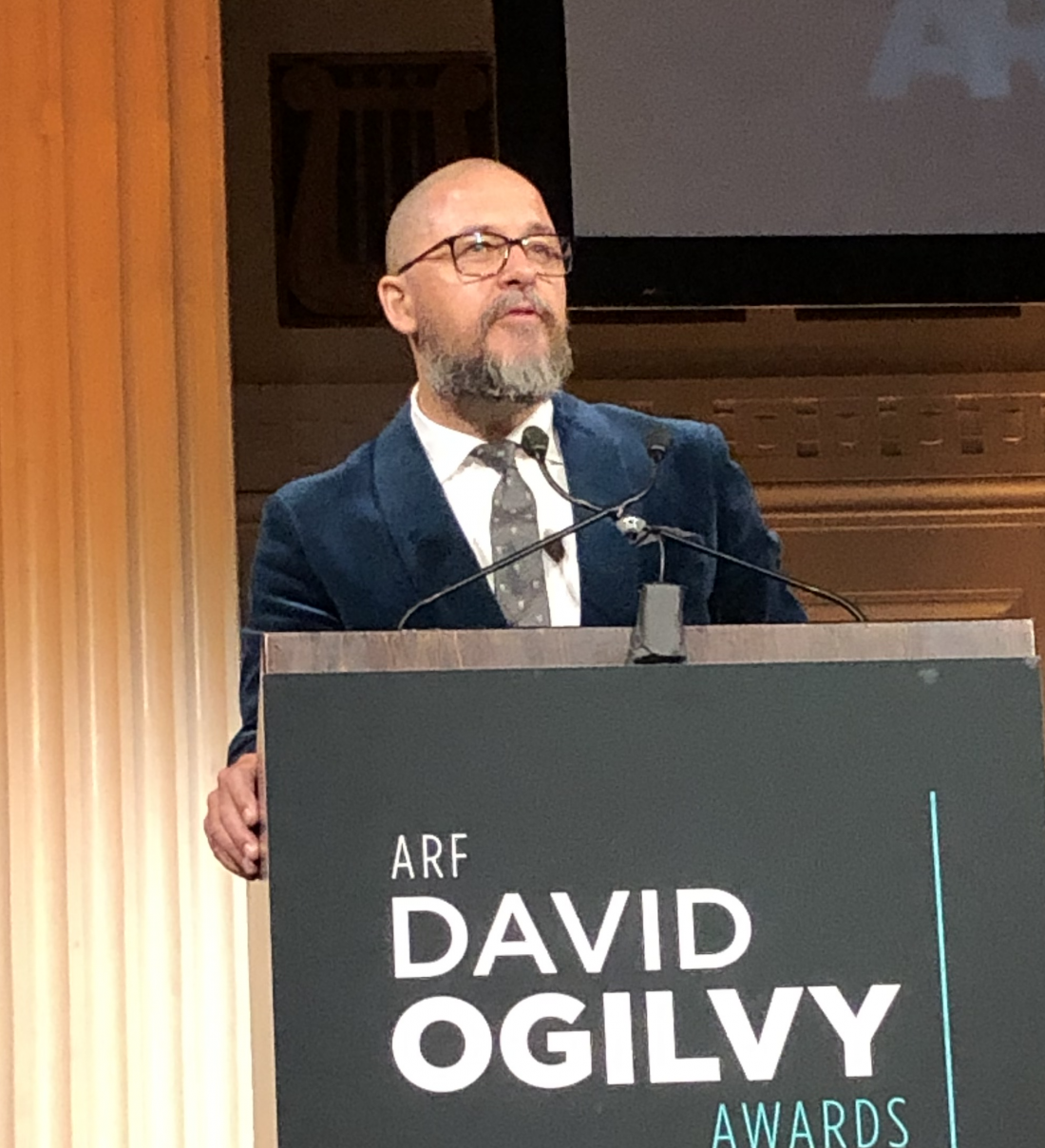
Ogilvy USA
Jason Lonsdale, Head of Brand Strategy,
Ogilvy USA
While I would love to say that 2020 is done and dusted, the truth is that today feels more like December the forty-third than the second week of a whole new year. The trials that we have all been through are far from over, and we are still looking for guidance for the journey ahead. With this in mind, it seemed appropriate to crib from the works of Joseph Campbell (and George Lucas) in order to explore what the role of brands can and should be in 2021.
We must first recognize that the brands we are tasked with stewarding are not the heroes of this journey. The real heroes, the Luke Skywalkers, are of course our customers. What great brands have is the potential to take on the role of Obi-Wan Kenobi – the mentor, helping people on their quest through to the “new normal”, offering guidance and support, and giving consumers the gifts they need to heal this broken world.
Now, this is a demanding role, and embracing it will mean truly recognizing the fundamental interconnectedness of all things while adhering to a strong moral compass that transcends quarterly shareholder returns (witness Ben & Jerry’s ironclad commitment to social justice, or Nike’s continued support of Colin Kaepernick). It will require meaningful sacrifice and helping those you previously thought of as competitors (such Burger King’s recent campaign promoting independent restaurants struggling under lockdown. As Obi-Wan said, “if you define yourself by the power to take life, the desire to dominate, to possess, then you have nothing”). Embracing this role will also require fluidity and flexibility as the journey throws unexpected new challenges your way (remember, “only a Sith deals in absolutes”). Finally, and most importantly, this role will need you to find the courage and humility necessary to avoid the prideful temptations of the Dark Side (so, please, no more trumpeting your own successes or the easy yet empty virtue-signaling of posting another black box to your social media pages).
May the Force be with you.

Managing Director,
Momentum
Lina Fateen, Managing Director
Momentum Egypt
2020. What a year! So much happened, globally and locally, and within our agency. It was truly overwhelming. Lots of change and confusion. The main key trends that I can capture are:
- Online and e-commerce is definitely on the rise, and is critical for business continuity and growth into the future.
- Brands that require face to face interaction have reverted to taking their brand experience online. For example, Peugeot, a client of ours, did great by creating interactive films online to showcase their cars from all angles, inside out. Same happened with a lot of Real Estate players.
- Online. Online. Online. Covid-19 made it imperative for clients to go online
- Managing productions with limited budgets, or limited crew. It was difficult to crack at first, because it changes the format creatives used to operate within, but many did manage, and the results were actually very good.
- Outdoor maintained its importance in my opinion, and should not be downsized or disregarded as a very important medium.
- WFH proved efficient for many, and would be much accepted into the coming years, which creates a more flexible work environment and encourages working mothers into career continuity.
In my opinion all the above are good changes.
Brands who choose to go silent in times of uncertainty, and or decide to have budget cuts, even though their products are selling just the same, if not more, is one key trend that we witnessed. That is the one trend that really has is negative and needs to be changed. Brands who maintain their presence in tough times, are the only ones who come out as leaders and come out strong.

Babyshop
Mitin Chakraborty, Head of Marketing,
Babyshop
2021 is here. Let’s just say this will be yet another year that will bring upon different set of challenges.
Without dwelling too much in the past, I’d take this year on our chin and find opportunities from all the adversities this world has faced. As businesses we have all had our share of successes and failures. It surely hasn’t been easy to read and cater to the changing landscape — from shifting customer buying habits, to customer experience management, digital agility and marketing effectiveness. Whilst there’s a visible shift in customer behavior over the last few years, given this fast-paced digital world, the lockdown took it few notches up. Shopping and marketing have been about safety, convenience, personalization, human touch and meaningful partnerships, and a lot of it will continue to be relevant — while their extent of relevance and impact will continue to vary from businesses to businesses.
For me the biggest theme that has emerged is the need to deliver on the value-mindset of customers. The lockdown has had varied degrees of ebbs and flows in the customer’s journey and this has created a new mindset towards shopping. We are also in a time-poor economy. Time affluence, globally, is at its record low. These two factors coupled with the rising pace of digital adoption and a shrinking wallet, have created well-pampered and highly impatient customers who are value-seekers. This trend isn’t going to change anytime soon. Customers will demand more – more options, more savings, more services, more recommendations, more comparisons. And while businesses have to figure the right proposition that lets them win in this complex marketplace, let’s not forget the challenges this throws to marketers on a day-to-day operation front. The quest to serve ‘more’ will certainly lead to some extent of organised chaos — be it the convoluted customer journeys and the need for active insights, birth of new segments and their unique strategies, agile campaign management and their ongoing optimization or churning out differentiating content. These are some that’ll continue to underpin the core business proposition and its execution. And it’s already calling for a bigger role of integrated tech solutions in marketing automation – from a modern CDP (customer data platform) that orchestrates your CRM and channel plans to AI tools that can churn content at scale or optimize campaigns at scale and bespoke marketing project-management tools that assigns tasks, measures bandwidth and controls team performance. Some of these will be critical to our teams’ success and there’s a bigger need to adopt them now.
The other key trend within the medium and large businesses would be the adoption of hybrid insourced models within creative & media operations, especially in retail and other D2C businesses. I would attribute a lot of this to achieving agility in execution, as we serve an extremely dynamic business environment. But this isn’t as straightforward, given the need to invest in the right skillset and marketing structure. In the long run this will surely drive value if managed with the right strategic intent and framework. My recommendation will be to have your core partners control the strategic direction of the brand — owning the creative strategy, channel planning and master execution, while the inhouse teams kick in with execution at scale, keeping an overarching messaging and creative guidelines in mind.
While some of the big marketing giants have already moved to this model, the year ahead will possibly see many more follow suit.
In summary, I am extremely optimistic about the year ahead. While we focus on the key trends that drive growth for businesses and elevates the customer experience, let’s also keep a strong tab on how the ways-of-working too could be better optimized to meet the business and consumer needs.

Etihad Aviation Group
Nomfundo Sarah Msomi, Head of Marketing and Partnerships,
Etihad Aviation Group
In 2020, those of us with the privilege to take advantage of flexible working arrangements went back to basics. We put on our Crocs, let nature do its thing with our hairstyles, stocked up on loungewear, and grappled with the meaning of work-life-balance. We stared ourselves down on camera, confronted some of the more relentlessness aspects of modern work, and made new commitments to ourselves and others. It wasn’t a reckoning as much as it was an opportunity to appreciate the things we’d come to take for granted before COVID-19 rocked our way of life. Like office workers who have had to re-learn the fundamentals of communication and team work in isolation, brand strategy needs to go back to basics, tapping into the truth of what brands stand for, and the value they bring to their customers. In 2021, brands shouldn’t fundamentally alter their strategies; they should soul search and return to fundamentals. Only then will they be able to communicate clearly – with their mics unmuted.
-
- Who are your customers, really?
- What do they actually need most from you?
- Have you and are you serving those needs?
- How can you deliver on your promise clearly?
- What value do you bring, and how can you better enhance it now?
As the world views new information and content with increasing uncertainty and rightful weariness, best practice brands will tap into their core, their very DNA, to tell truthful stories. That means brands rallying teams around core brand strategies, using those strategies to sense check content and concepts, and reconfirming the promises they made back when they would never have believed that a year like the one we’ve just experienced could ever occur. The biggest brand trend of 2021 will be looking inward in order to tell inspiring and truthful stories and deliver strategy-driven experiences.

Chief Marketing Officer,
Microsoft MEA
Peter DeBenedictis, Chief Marketing Officer
Microsoft MEA
COVID-19 has sparked unprecedented innovation, starting with a recognition of the changing preferences of customers. A McKinsey study from late last year showed a marked increase in reliance on digital channels by B2B sales and marketing functions worldwide. Some 75% of respondents expressed confidence in the effectiveness of digital business models. This was a rise of 10 percentage points from April, when COVID-19 was just starting to get a foothold.
This confidence is vindicated by an increasing trend in B2B customers to place large orders through digital channels – up to US$1 million in value in 15% of cases. But this does not spell a complete dehumanisation of the sales lifecycle. The use of both live chat and videoconferencing has taken a massive leap since Q1 of 2019.
In the year ahead, regional companies will face two broad challenges. The first is the maintenance of digital infrastructure. An online presence that is robust and always on will be vital; you cannot afford outages or high latency, as either could be a deathblow to a brand. Also, business intelligence will allow you to keep ahead of customer needs and strengthen order fulfilment. The cloud can play an essential role in empowering brands remain agile and adaptable to meet the evolving customer needs.
The second challenge is to position yourself as a compassionate brand. Burger King is a great example of how it urged customers to place orders with competitors as well, acknowledging the thousands of fast-food employees whose positions were vulnerable because of the economic side-effects of the health crisis. This year, more than any other in living memory, will be one in which cries of “Me, me, me” will be drowned out by softer sentiments, such as, “We are all in this together.”
Digital technology alone cannot meet this challenge. We must look outward and decide where we fit in this moment in history that we all share. As organizations from around the world continue to navigate and transition from a response to recover, and then to a reimagine phase of their journeys – innovation and collaboration can ease struggles and bring hope.

Managing Partner,
Brandon Consultants
Richard Taylor, Managing Partner
Brandon Consultants
We anticipate three macro trends that brands can look to help consumers with post-Covid19:
1. Home Sweet Home: People are now used to living and working in their homes, never before have they spent as much time in their own 4-walls. As we see vaccines take hold the world over people will venture out, but do so nervously. The future will involve many people splitting home-working from office based working, as such brands need to look to see how they can help people at home. From creating in-home offices, in-home gyms, through to in-home entertainment. Will cinemas even exist in the future, or will we just stream the latest movies into our home-cinema living rooms? Brands need to look to improve our lives at home, what products and services are going to improve our new way of life?
2. The Power of Local: The sense of community has returned, people are coming together and supporting each other and their local neighbourhoods like never before. Brands need to look to see how they can help facilitate and support community activities like never before. Brands need to focus on kindness and have a heart, not a robotic backbone that lacks any empathy. We see brands just like we see people, we judge how they behave and what impact they are having in the world. Many would do well to look to the local communities they support and think “how can we use our power to support these communities.
3. Health & Wellbeing is Exploding: Even before the pandemic hit we’d spotted that more and more people were focusing on their own physical and mental wellbeing. In the supermarket people were beginning to move beyond the focus of protein and base vitamins, minerals and supplements. They were looking for foods to drive immunity, superfoods that can help stave off all sorts of illnesses will become the norm. We see this trend continuing along with a whole new focus on looking after our physical and mental wellness. Brands need to look within to see how they can adapt their products and services to improve our daily lives. CBD is a perfect example, in anxious times this has created a new industry that is sweeping the world and helping people to relax in times of need.

Brand Director, Lexus UAE
Saad Abdullah, Brand Director
Lexus UAE
From a marketing standpoint, any major destabilizing event must trigger an immediate re-evaluation of consumer behaviour and expectations. In the current case of the COVID-19 pandemic, the questions that form part of this analysis include the following: How will consumer needs and priorities shift? Which attitudes will come to the fore – and which common habits can we expect to dissipate? Which behaviours will consumers adapt, and of these, which ones will then remain when the pandemic passes?
At Al-Futtaim Lexus, assessing the needs of consumers is nothing new. Long before the spread of COVID-19 and the forced migration of many into e-commerce solutions, we as an organization recognized trends in consumer’s buying habits. In this regard, the impact of the pandemic has served both as an accelerator for our plans, and as a quick testing ground for new ideas rs which will continue into 2021 and beyond.
As consumers sought online options at the outset of the pandemic, Al-Futtaim Lexus was quick to offer an online journey to not only allow them to stay at home, but to elevate our customers’ experience pre, during and post purchase. We launched online services such as vehicle purchase, booking and at home test drives, a vehicle visualizer and an overhaul of our website to bring the showroom experience to the customer with 360 views for a fully interactive experience. Through our game-changing partnership with Facebook in November, we enabled our customers in the UAE to explore the entire Lexus range, customize from body to engine, book a test drive, reserve it and even pay a deposit, all through their mobile phones without leaving the Facebook newsfeed.
Of course, while our interaction went from offline to online, it was crucial for us that we don’t undermine the value of human and personal interaction. The Japanese tradition of ‘Omotenashi’ or customer experience of the highest quality, has had a strong influence on the Lexus brand from the beginning, and can be seen in every aspect of our business and will continue to be present across all touchpoints as we navigate what the future may bring.
Looking ahead to 2021, consumers will have an increased focus on safety so brands must act with purpose and information, not just with marketing and sales; safety must be built into the customer experience. We must continue to meet customers where they are through digital innovation and expanding home delivery options. Customers will be looking for best value and our retail offering may look very different. We must maximize opportunities to be more proactive and nimbler, as well as able to anticipate customer expectations and needs.
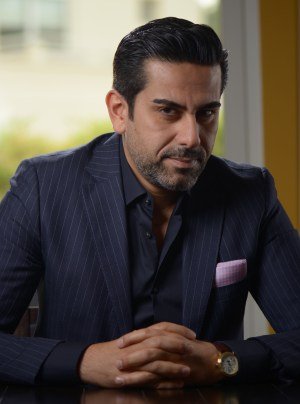
Global Client Leader- Nestlé,
Wunderman Thompson Global
Sasan Saeidi, Global Client Leader- Nestlé
Wunderman Thompson Global
The word COVID-19 is forever engrained in our minds. We will look back to 2020 and remember it as a year of “quarantine”, school closures, Work from Home (WFH), social distancing, a year where the phrase “Sorry I was on mute” will forever be engrained in our business vocabulary.
Let’s really understand that the 2021 consumer behavior is not the one of the past. We as a human race have gone through a battle in 2020. Our minds and souls have been hardened and impacted. We have gone to great depths of hope and anxiety and as such we look at a lot of our experiences differently. As consumers we have Zero tolerance for B.S. We want authentic; value driven, purposeful and human led design thinking. We want brands and business to do more-good and to be at the service of our communities.
All of this is based on Global consumer research and this data shows what brands do today; will impact their consumer loyalty and business success measures in the future.
So:
- As a brand play a purposeful role. Today purposeful is meaningful. Stressing on the word Meaningful. The power of social conscience is vital. You need to have a point of view on social issues or else you will fail. Lean forward and be a concerned citizen.
- Repurpose your brand essence. Most of your consumers have not seen these critical times in their lifetime, so it’s important for brands to update and modify their personality to ensure it fits and strikes a respectful chord with today’s realities. Being respectful is extremely important. Being straightforward is vital.
- Ensure your brand values guide your actions.Your values keep you emotionally intelligent and act as your North Star. Following your values will help you connect authentically with your consumers and the community. They will keep you human.
- Change your brand success measure. It’s not critical what people think about your brand when they are asked; but its worthy if your brand comes to their mind throughout occasions and moments in their lives. There is a massive difference between the two; the latter is authentically connected and based on more sustainable experiences.
- Listen to your brand. Today people are looking for authentic and unique brand experiences. You can only provide unique experiences if you start hearing your brand more. We often use the word “consumer centricity”. But the truth is that consumers don’t know sometimes; and if all the brands in the world wanted to ask consumers what they want; almost all of today’s major brands would have not existed. Put your BX before your CX or else you will lose the brand edge that made you unique to begin with.
- Your company Culture is your safety net. They say Culture is like the wind. It is invisible, yet its effect can be seen and felt. When it is blowing in your direction, it makes for smooth sailing. When it is blowing against you, everything is more difficult. Brands and companies today need to ensure their Culture is employee centric; values humanity; values loyalty and puts people first.
- Volunteering goes along way. We have seen a lot of great examples of brands that have come forward and helped. We need to volunteer; and give back through service and act as a caring corporate citizen.
- Diversity & Inclusion.Ensure you and your brand are on fully onboard with Diversity and Inclusion as a force for good. Social responsibility, Inclusive design, ensuring your brand values, your communication, is diverse and inclusive is no longer a good to have. It’s a must. You need to shift from opportunity campaigns to meaningful brand commitments. I can’t say enough about D&I as part a brands value system and as a key success metric.
We all have friends and families that have been affected, whether through health or business, so I take it seriously both personally and professionally, and if this writeup can inspire action for a few or many, to volunteer, to pivot for the better of business and humanity then I feel it’s a good deed.
Let’s remember to adopt a zero tolerance policy in our marketing, communication and business conduct in 2021.

GREY Group
Shagorika Heryani, Regional Head of Strategy MENA
GREY Group
Now that the term ‘the new normal’ has been spoken about with nauseating ubiquity, lets talk about what that really means in 2021. The year promises to be unpredictable, in some ways, even more so than 2020. Last year caught us unaware, however 2021 will further push the boundaries of our institutions (healthcare, government, companies) and also our own sense of reality, battling the mental fatigue of periods of enforced isolation with the cautious optimism that the vaccine brings and the resilient human spirit. This will affect brand strategy in a myriad of ways, but two shifts stand out sharply for me:
1-Empathetic brands are powerful brands– Fear has been the dominant emotion of 2020 and its likely to continue this year as well, because fear is inevitable given the pandemic and its long term economic, social impact. Employees fear layoffs, consumers curb spending and our ability to predict, therefore control our destinies has come to a crashing halt. Brands need to build a counter narrative to this cycle of fear and bad news. We need brand strategies to evolve from being lofty purposeful statements to being actively empathetic in the present. I don’t mean more heart-warming communication and inspiring piece of content. I mean brands needs to start creating positive, empathetic action for their employees, existing consumers, communities and the planet. Think of your company culture, employer branding strategies, community outreach programs and adding value to the stakeholders and consumers you have. And the only measure of success for empathy is the results it generates and not the strategic intention.
2-Invest in your brand progressively– During a recession most brands and CXO’s tend to adopt a defensive vs. progressive growth strategy.Naturally, the defensive approach seems logical given the drop in sales and the future unpredictability of business. However, multiple economic studies over the last 100 years have shown that progressive marketing investments – focused on core brands, brand building vs. mere performance marketing inevitably buck the trend. It is better to maintain SOV (share of voice) at or above SOM (share of market) during a downturn: the longer-term improvement in profitability is likely to greatly outweigh the short-term reduction. A 2019 studyby Bain & Company of nearly 3,900 companies worldwide during the last recession found that those who invested marketing budgets strategically and at the same levels had a 17% compound annual growth rate during the downturn, compared to 0% amongst those who defensively cut marketing budgets.
In conclusion, I think the impetus for 2021 will be for us to be brave – as people, as decision makers, as employers. Both these shifts are counter intuitive to fear and embrace personal and brand leadership. And ultimately, I hope that’s the biggest shift in brand strategy in 2021 – a return to courage and building back greater than what we lost.

L’oréal Egypt
Shaimaa Ismail, Chief Marketing Officer
L’oréal Egypt
If we are to thank 2020 for anything it brought to us despite all challenges and the pandemic that took the world by storm, it would defiantly be the acceleration on digital transformation across all aspects of the business.
It has been years of effort and trails of marketers across the world to transform business from its common shape and form that we all now to be more agile and digitally advanced, responding to consumers’ rapid transformation impacted by the digital revolution.
With COVID 19 hitting the world, digital media consumption habits have increased dramatically with consumers glued to their digital screens; mobiles and laptops trying to kill time during lock downs and seeking online shopping solution to fulfill their needs while not being able to physically do shopping.
So despite the tragic pandemic impacts on the world, it had its bright side on digital marketing and E-commerce acceleration that we strived to achieve for years.
What happened in 2020 though was not a phenomenon that will shade off after few months. The digital acceleration has become a fact and an integral part of our life and of business evolution. This is here to stay and develop across years.
If we are to summarize few digital trends that will shape 2021 and have huge impact on business acceleration, we can highlight the following 5 trends to watch out for:
1- From social media to social commerce – the era of fruitful conversations
With the increase of time spent on social media platforms and the impact of consumers reviews and recommendations for products, the rise of social commerce started to be a trend to capture and build upon.
From online shops on big social platforms such as Facebook and Instagram to activating conversational commerce through chatbots, social commerce will be the trend to watch in 2021
2- E-Commerce smart solutions for the business beyond B2C
Startups providing business solutions for B2B to concur the E-commerce world are growing not only in the world or the region but in Egypt as well.
E-commerce has become the channel with high potential growth across all types of business and solutions to transform B2B to be accessible through E-Commerce is increasing every day. Empowering wholesalers and small to medium enterprises to be able to have their transactions online is growing steadily and will change the way B2B business sis being done everywhere.
3- The growth of Mobile payment and smart wallet solutions
The mobile payment will become the new normal of payments online in few years and maybe less. Egypt will be one of the rising countries to capture this wave capitalizing on the huge penetration of mobile phones and specifically smart phones across the Egyptian populations. With increasing figures of online shoppers in Egypt as well as the governmental strategies towards digitizing official and governmental services with online payment accessibility as well as encouraging Telecommunication sector to increase their investments in mobile payment solutions in collaboration with central Bank, we expect mobile payment to eb more active and widely penetrating in Egypt very soon and 2021 will mark the start of this interesting digital transformation for payment solutions in Egypt.
4- Digital Media Impact and ROI
All digital media products across mega platforms are now shifting towards assessments of media impacts on different business objectives; from brand buildings to online sales, we are all now looking behind digital media known KPIs of reach and engagement to actual impact on business.
Digital media platforms now have increased their share of media budget to range form 35% to 50% in some industries and this has put more pressure onto finding the right tools to assess digital media spending on campaign objectives as well as developing new solutions to be used specifically for conversion and consumer acquisition and not only for brand building. The right digital media optimization behind E-commerce will be the game changer.
5- Consumers ahead of all brands with higher expectations
Last but never the least comes consumers high expectations and thrive to more easy, accessible, fast and reliable services across all aspects of their lives.
From content served on digital platforms either for knowledge and learning or for entertainment to easy solutions for online purchases, payment solutions to smooth operation and order fulfilments, consumer dreams and expectations are higher and faster than all efforts done by marketers across the globe and it is becoming our mission to catch up with their speed and always put them at the heart of all what we do.

MENA Marketing Lead, Head of Marketing
Uber Egypt
Sherine Kabesh, MENA Marketing Lead, Head of Marketing Egypt
Uber
In 2020, COVID-19 ground the world to a halt. At Uber, the company that moves things, we asked people to not move to help flatten the curve, and helped move what matters to protect those in need. This global pandemic has undoubtedly been the most seismic event to shock our world in its recent history, and no community, business or consumer anywhere in the world is immune to the everlasting change it has instigated (pun intended).
There was no playbook for businesses to navigate this one: hard decisions had to be made on the fly, even at companies with decades of structure and governance. The stakes were high, and the outcomes – anybody’s guess. The rapid spread of COVID-19 has not only upended the world, and our business, it’s temporarily upended how the world moves. For Uber, changing behaviours have disrupted our business model and forced us to adapt. We pledged 10 million rides and food deliveries to healthcare workers, seniors, and other people in need around the world. We used #MoveWhatMatters as a brand principle to ground everything we do to focus on earners, our communities, and the essentials.
Fast forward a few months down the line to sanitizer sales skyrocketing, masked faces standing on social-distancing markings and analysts scrambling to make sense of it all. Consumer patterns had changed dramatically and irrevocably. Brands that were in the background of their lives took center stage. Affordability became key with less disposable income to spend on non-essentials. And even the definition of what’s essential changed. Riders around the world, no matter what their socioeconomic status, had one thing in common: thinking twice before leaving their homes. As Uber, our priority programs, such as low cost, new use cases, transit, hailables, and safety, will continue in 2021 to be essential to make shared mobility the efficient, safe, and sustainable solution for all consumer segments.
For most brands pre-covid, safety marketing centered around incorporating evergreen safety principles into key messages (save for brands where safety is the commodity such as cleaning products, child restraining systems and band-aids). At the height of the pandemic, safety had to be highlighted as the core rather than a supplement for every brand, no matter the product. To ensure safety within Uber, we used our technology and introduced new safety initiatives such as #NoMaskNoRide. Every brand manager had to become a safety expert overnight, and incorporate it in the value prop of their products. In 2021, I believe brands should be careful in how they weave safety within their messaging so as not to instigate more fear or concern, but actually positively support the community and foster a safer brand perception. It has become every brand’s integral duty to come together with others and show up for their communities. We partnered with Unilever to provide free safety kits and in-car separators to create a shield between riders and drivers. So, bit by bit, businesses shifted from a crisis modus-operandi to thinking about recovery, and normalizing the new ways of operating.
Pre-Covid, while many companies allowed working from home on occasion, it was more the exception than the norm. At Uber we actually announced WFH for roles that allow it until June 2021. We learnt to rely heavily on video-conferencing, we even learnt how to shoot content over online platforms which initially seemed impossible. Consumer insights have changed and successful marketing will center around being laser focused where it matters most: having better targeting, better channel optimization and relying on omnichannel marketing.
With a potential end in sight thanks to the two vaccines that have been developed, brands face yet another test and must continue to evolve their tone of voice while ensuring to show empathy towards their employees and customers. As we kick off 2021, the silver lining is that 2020 has taught us the importance of readiness and scenario planning – every company is incorporating wave 2 and 3 scenarios in their forecasts. I am confident that if anything, this ordeal has raised the bar for panic really high, and demonstrated that agility is the most valuable attribute to any organization should they wish to prevail

Regional Head of Strategy & truth Central
FP7 McCann MENAT
Tahaab Rais, Regional Head of Strategy & Truth Central
FP7 McCann MENAT
We are still going to be living amidst the health, the social, the economic and the human impact of COVID-19 well into 2021, but we’ve all learnt to co-exist better with it. What’s very important is that short-term wins, for brands, should be part of a long-term focus; not a replacement for it.We have to empathize with our clients. They have short-term goals and targets that they need to achieve to ensure their job security and their growth as individuals, in this tough economic environment. So, we should help them achieve those goals and targets. By doing so and earning their trust, in parallel, long-term brand building efforts shouldn’t be forgotten, as they drive long-term growth. We need to talk about how do we keep the brand can keeping on earning a meaningful role in people’s lives in the long-term through new products and experiences, through partnerships, through untapped avenues and through new channels. We need to work with them and nudge them along.
Also, most brands are going to be under more pressure to produce creative work that’s cost-effective and at a speed-to-market like never before, along with the pressure from competitors who seek to do the same. In this quest for impact, partnerships and brand synergies are super important.I use the word synergies carefully, because the two brands should have something to offer each other. Because when the economy is challenging, you need people and brands, with a common north star, to come together.So, agencies can’t look at their brands and clients in silos. We need to look at the kind of partnerships we can strike for them. More connectors. Not just communicators. The role of agencies is more than just effective communications; it’s about creating mutually beneficial CONNECTIONS for brands in 2021 and beyond. We’re doing such initiatives for our brands and they’re invaluable in a tough year.
Additionally, as we know, there is a lot that has been said around “Data kills creativity” or “Creativity without data is ineffective”. We’ve all heard that. We’ve all seen clients and agency folks falter at times by leaning on either side; some confusing technology platforms or media metrics or length and orientations of videos with what data is ACTUALLY meant to do. But why do both have to get pitted against each other? Why can’t both get along? Why can’t we see more marriages of data and creativity? Because in a new data economy, people will be more open to sharing their data for something meaningful in return, there will be innumerable opportunities for us to humanise data through a confluence of meaning and analysis. And I don’t mean the standard media and targeting data. I mean people’s actual data. Because as people, we have motivators across all aspects of our lives. The same goes for data. So, how about we look at data and marketing solutions differently? How can brands use people’s data to benefit them and be open and transparent about it? A new hierarchy of data needs could be a great model to create data-driven solutions. And a lot of that data can come from brands if they know what the agency wants to do it. We’ve done that for our partners successfully and are doing more of it – being matchmakers between client’s data and creativity to solve their challenges and drive their business forward.

General Manager,
Labbrand New York
Ying Mu, General Manager
Labbrand New York
At the dawn of 2021, we can all sense that this is a year of change. The pandemic has been a catalyst at making several potential consumer and market shifts a reality. Compressing an extended period of transformation, typically a year or two, into mere months.
It’s no doubt that in 2021, we’ll be seeing a stronger push on digital brand innovations. Virtual space will transform from a place of DOING to a place of BEING. Digital interactions will likely become the main medium for brand engagements. In a time like this, it’s crucial for brands to foster and strengthen connections with consumers by offering new, unique, and ownable digital interactive experiences. We’ll be seeing a revamp of digital platforms and new innovation of key features to adapt and thrive in this new ecosystem – features that support virtual human connections (whether it’s between consumers themselves or between sales and consumers), features that encourage celebration and personal well-being will also be the area of interest.
We’ll be seeing a shift in consumer consumption, a shift in sensibility – turning aspiration into practicality, from excessive consumption into having just right, from what I want into what & how much I need. Moving beyond minimalism, this is about being unabashed about what I need and consuming exactly that. Consumers are also increasingly shifting preference towards local brands and products. The pandemic has brought into focus our dependence on our immediate surrounding – for physical sustenance & emotional wellbeing. Watching out for each other and having a strong sense of community are top priorities.
Sustainability as a lifestyle will thrive in 2021. The onus of sustainability resides not anymore with the governments and large corporations, but within everyone. Sustainability will influence purchase through disposal. Now it is not the status of opting in but the shame of opting out. New innovations, products, and services will be launched to help drive a better tomorrow. Eco-responsibility is the new normal, the new modern and soon the new legal.
In 2021, it’s now the time for brands to acknowledge and react to these changes, to adapt and evolve their brand strategies, and to better capture these monumental behavioral shifts for a brighter future.

Africa, Middle East & South Asia at Pepsico
Yosra Ebeidy, Marketing Director Foods –Africa, Middle East & South Asia
Pepsico
We have seen through the past year, with the outbreak of the pandemic, phases of confusion, instability, and economic challenges which all led to consumers’ and shoppers’ behavioral changes. This has led to changes in consumption habits, need drivers, shifts in interests, more stay-at-home, e-commerce boom, and need for connectivity in different forms. As such, we have seen major changes in the brands strategies, communication messaging, channels strategy and prioritization of investments across brands. While some companies and brands were able to sustain their businesses, others stumbled along the way.
In 2021, we anticipate that some of these trends could go back to pre-COVID levels such as the away from home vs. staying at home but some trends are expected to accelerate more and thus will shape new market conditions across the MENA region. With the current economic pressures, shopping baskets, consumer spends and consumption patterns will be impacted differently across different age groups and socio economic segments, calling the need to become more affordable on one spectrum – looking for cheaper solutions or buying less, yet also looking for more pleasurable enjoyment and need to connect on another spectrum to relieve boredom and stress.
For me, the key question is, within this ever-changing environment and market conditions, how to continue driving brand relevance and for categories to continue being part of consumers’ everyday lives.
In such market conditions, to build brand strategies to drive growth profitably, we need to be very vigilant about being more consumer centric, using new real-time tools to understand our consumers’ and shoppers’ need drivers, shopping patterns and consumption occasions, identifying opportunities to grow penetration where we exist and expand beyond into new consumption occasions to strengthen our brand relevance in the consumers’ daily lives. Based on the consumer understanding and new trends the brand strategy should be aimed at setting investment priorities in channels, media and communication messaging, go to market approach, product price and formats and with the need to balance between building on brand trust and familiarity while tapping into differentiated innovation platforms to continue to drive portfolio relevance to consumers and shoppers. An integral part of the brand strategy is to continue to inspire consumers in such a time with a strong brand purpose with a voice in the society and positive impact on the community. Notably the success of any strategy is not simply writing down the strategy but rather by setting clear actionable brand plans and tactics to achieve the strategy. We must clearly set key performance metrics to continuously measure progress and optimize the brands’ performance.
In summary, we need to have the consumers and shoppers at the heart of our thinking and growth strategy to continue to drive brand relevance and more than ever work integrated across different functions in the organization to focus on our consumers and shoppers. This mindset should not be reserved just for marketers. Instead, I believe it should be the mindset of every employee in the organization.

Managing Director, EMEA,
Siegel+Gale
Zouheir Zoueihed, Managing Director, EMEA
Siegel+Gale
Brands learnt a lot about themselves this year. One particularly important lesson was how quickly they can adapt to change, and how prepared their brand to guide that change. The brands that have experienced the most success are those that understand who they are and where they can play. In other words, they have a clearly defined purpose, and they understand how to use it. While many brands have made great inroads in uncovering their purpose, many have found it difficult to activate that purpose. As 2020 comes to a close, we now know there is still a way to go to overcome Covid-19. What’s more, the aftershocks of the pandemic will be felt for a long time after the virus has been suppressed. To face the fallout, it will be vital for organisations to understand how to really activate their purpose. It’s a vital task, but not an easy one.
Integrating your purpose into everything is a smart first step. An organisation’s purpose is the thread that runs throughout your business. It is not a marketing programme and it cannot be an after-thought. It must be delivered through actions and behaviours. Purpose needs to be translatable to every aspect of the brand experience. Although often cited, Patagonia is a great example that has integrated their purpose into everything they do.
Building on this integration by cultivating your purpose through repetition will allow consistency in both your communication and your action. This will act as a reinforcement until you have truly embedded your purpose into all aspects of the brand. Identifying key stakeholders that will amplify your message externally and internally will add new voices to your purpose. Ensure access for everyone to deliver on the purpose, no matter what aspect of the business they are in.
Finally, when your purpose is living and breathing throughout your organisation, you must demonstrate with action. With leadership setting the tone, employees are assured that the business is operating within the bounds of its aspirations and will empower them to do the same. Activating purpose through a simple experience will clearly demonstrate to both your employees and customers who you are and what you stand for. This is the first step in creating a positive employee culture within your business. In a time when many businesses are forced to make incredibly difficult decisions, ensuring your team are aligned and can see the bigger picture will go a long way to cementing a robust culture that can survive challenging times.


